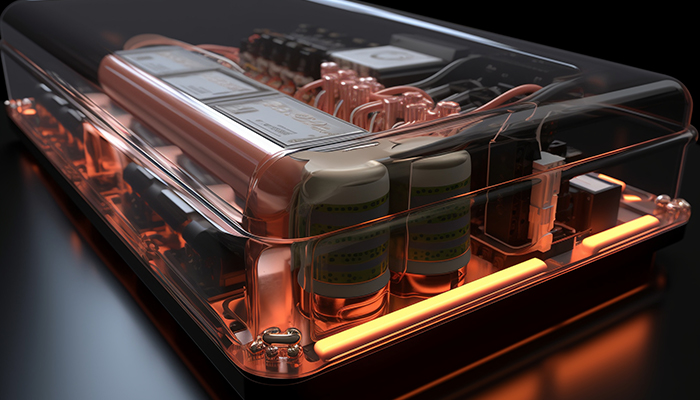Introduction
China’s Ministry of Industry and Information Technology (MIIT) recently issued the GB38031-2025 standard, dubbed the "strictest battery safety mandate," which mandates that all new energy vehicles (NEVs) must achieve "no fire, no explosion" under extreme conditions by July 1, 2026126. This landmark regulation marks a pivotal shift in the industry, prioritizing safety as a non-negotiable requirement. Here, we explore the evolving technical demands for batteries and the corresponding advancements in Battery Management Systems (BMS) to meet these challenges.
1. Elevated Safety Standards for NEV Batteries
The GB38031-2025 standard introduces rigorous benchmarks that redefine battery safety:
- Thermal Runaway Prevention: Batteries must withstand extreme scenarios, including nail penetration, overcharging, and high-temperature exposure, without catching fire or exploding for at least 60 minutes16. This eliminates the previous "escape time" concept, demanding intrinsic safety across the battery’s lifecycle.
- Enhanced Structural Integrity: New tests, such as bottom impact resistance (simulating road debris collisions) and post-fast-charge cycle safety assessments, ensure robustness in real-world conditions26.
- Material and Energy Density Upgrades: The standard enforces a minimum energy density of 125 Wh/kg for lithium iron phosphate (LFP) batteries, pushing manufacturers to adopt advanced materials like nano-insulation layers and ceramic coatings16.
These requirements will accelerate theelimination of low-tier manufacturers while consolidating the dominance of industry leaders like CATL and BYD, whose technologies (e.g., CATL’s CTP 3.0 and BYD’s Blade Battery) already align with the new norms26.

2. BMS Evolution: From Monitoring to Proactive Safety
As the "brain" of battery systems, BMS must evolve to meet the GB38031-2025 mandates. Key trends include:
a. Higher Functional Safety Certification
BMS must achieve the highest automotive safety integrity level (ASIL-D under ISO 26262) to ensure fail-safe operations. For instance, BAIC New Energy’s fourth-generation BMS, certified ASIL-D in 2024, reduces hardware failure rates by 90% through real-time monitoring and redundancy design3. Such systems are critical for early fault detection and preventing thermal runaway.
b. Integration of Advanced Sensing Technologies
Early warning mechanisms are vital. Hydrogen sensors, such as those developed by Xinmeixin, detect gas emissions (e.g., H₂) during early-stage thermal runaway, providing up to 400 minutes of advance warning. These MEMS-based sensors, certified under AEC-Q100, offer high sensitivity and durability, enabling cost-effective, pack-level safety solutions5.
c. Cloud-Enabled BMS and AI-Driven Optimization
Cloud integration allows real-time data analysis and predictive maintenance. Companies like NXP Semiconductors leverage cloud-based digital twins to refine algorithms, improving state-of-charge (SOC) and state-of-health (SOH) estimation accuracy by 12%7. This shift enhances fleet management and enables adaptive charging strategies, extending battery lifespan.
d. Cost-Effective Innovations Amid Rising Compliance Costs
Meeting the new standards may increase battery system costs by 15–20% due to material upgrades (e.g., flame-retardant electrolytes) and structural redesigns2. However, innovations like CATL’s modular CTP technology and simplified thermal management systems help mitigate expenses while boosting energy density68.

3. Broader Industry Implications
l Supply Chain Reshaping: Over 30% of small-to-medium battery firms may exit the market due to technical and financial barriers, while collaborations between automakers and tech leaders (e.g., CATL and BYD) will deepen12.
l Cross-Industry Synergies: Safety advancements in NEV batteries are spilling over into energy storage systems (ESS), where grid-scale applications demand similar "no fire, no explosion" reliability2.
l Global Leadership: China’s standards are poised to influence global norms, with companies like Xinmeixin exporting hydrogen sensor technologies to international markets5.

Conclusion
The GB38031-2025 standard represents a transformative phase for China’s NEV sector, where safety and innovation converge. For battery manufacturers, survival hinges on mastering thermal management and material science. For BMS developers, the future lies in intelligent, cloud-connected systems that preempt risks rather than react to them. As the industry transitions from “growth at all costs” to “safety-first” innovation, companies that embed these principles into their DNA will lead the next era of sustainable mobility.
Stay tuned for further updates on regulatory developments and cutting-edge technologies shaping the future of new energy vehicles.
Post time: Apr-22-2025




